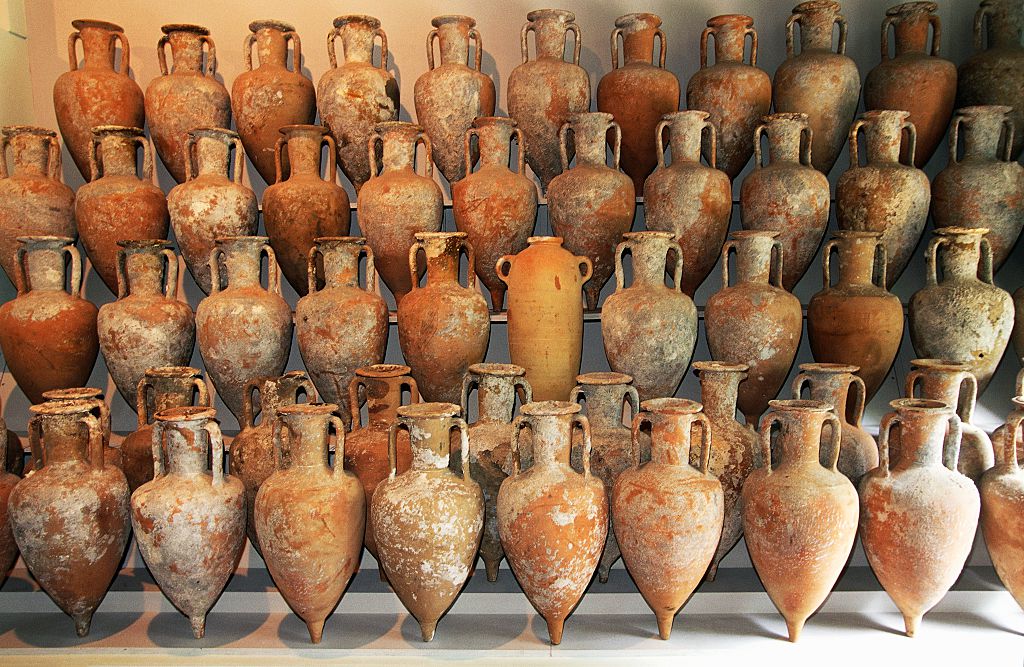Jackson Pollack NFTs Make $100K in Sales Within One Day
Today, the Jackson Pollack Studio and Iconic, a digital art platform that partners with cultural institutions, launched “Beyond the Edge: The Jackson Pollack Studio Collection.” The collection features four NFTs of cropped sections from Pollack’s studio floor. Pollack famously laid his canvases on the floor, so it ended up catching what the canvas didn’t, becoming unintentional works of art.
Helen Harrison, Director of the Pollack-Krasner Study Center, remembers vividly the moment in the 1980s when the floor of the studio was revealed. Pollack had decided to winterized his studio floor in 1953, sealing in hundreds of splashes and drips of paint that had been lavished there from 1946 to 1952. Once conservators realized that there might be important clue to Pollack’s process waiting to be discovered, the masonite treatment was removed. Harrison, who at the time was a curator at Guild Hall and an arts columnist for the New York Times, covered the unveiling for the newspaper.
“As the tar paper was peeled back and the masonite squares were removed, more and more of this wonderful documentation came to light and pretty soon the whole floor was uncovered, revealing this amazing artifact,” Harrison told ARTnews. “It was a kind of archaeological revelation.”
Since then, art historians have been able to track which daubs and lines of paint correlate to certain pivotal works, such as Blue Poles (1952) and Convergence (1952). The Study-Center, which operates separately from the Pollack Foundation, has licensed the image of the floor in the past for fashion and decor collaborations. Profits from the sales support the preservation of the campus, which include Pollack and Lee Krasner’s house and the studio. So when Iconic reached out with an idea to use the image of the floor in NFTs, the idea didn’t seem too daunting at all.
“We really looked at this as an opportunity to bring the studio floor to life, to digitize the floor so that it would be preserved forever,” Chris Cumming, CEO of Iconic, told ARTnews.
To make these NFTs, Cumming’s team took hundreds of high-definition photos of the floor and then stitched them together using AI tools, resulting in an 800 gigabyte file that Cumming said broke several computer graphic cards.
Each NFT, which come in editions of 125, are paired with a physical print and act as the key to access other collections Iconic have developed with the Studio. The Pollack Collection sets were first available to collectors who hold Iconic’s Art Pass, which essentially is a membership with the marketplace that gives holders priority. Within hours each set was claimed, raising $100,000, according to Cummings. The rest of the NFTs will go on sale today, at $1,500, or 0.5 Ether for Art Pass Holders and $1,800 or, 0.8 Ether for those without.
But the collaboration isn’t just focused on digital preservation. 50% of proceeds from primary sales and 5% of secondary sales will go to the Study-Center with the express purpose of funding the ongoing stewardship of the studio.
“One unique thing about the studio is that that Study Center has made the decision to allow visitors to walk over the studio floor, which is of course an awesome experience,” said Cummings. “But that also ups the need for preservation to enable that experience.”
Proceeds from future collaborations with the studio, which includes an NFT collection by digital artists inspired by Pollack and an Ordinals version of the collection (NFTs but on Bitcoin instead of Ethereum), will also go towards up-keeping the grounds. And there’s a lot to keep up.
“Our buildings are our collection,” said Harrison. “For a historic site, there’s constant maintenance, particularly with something as delicate as the floor, and there’s also a roof over it needs to be replaced from time to time. And termites––you have to worry about them, too.”



